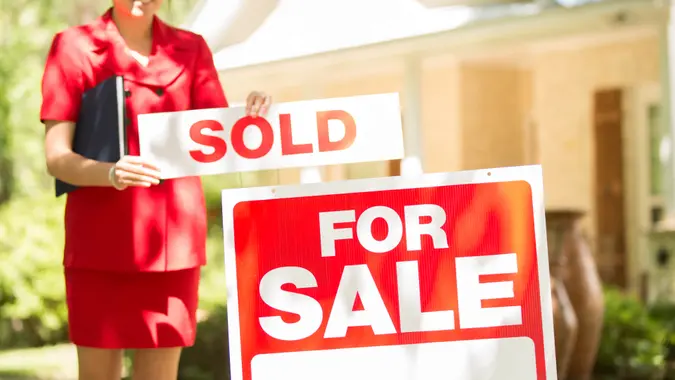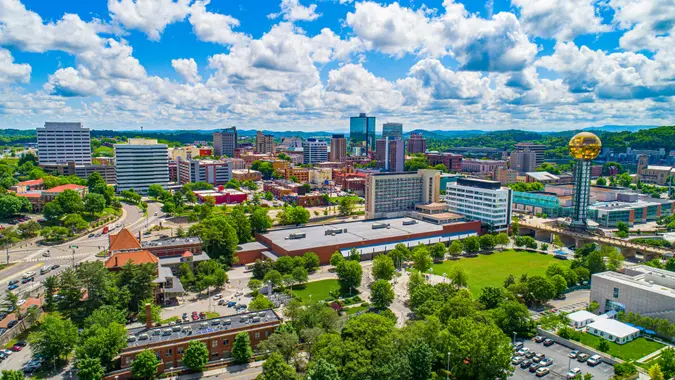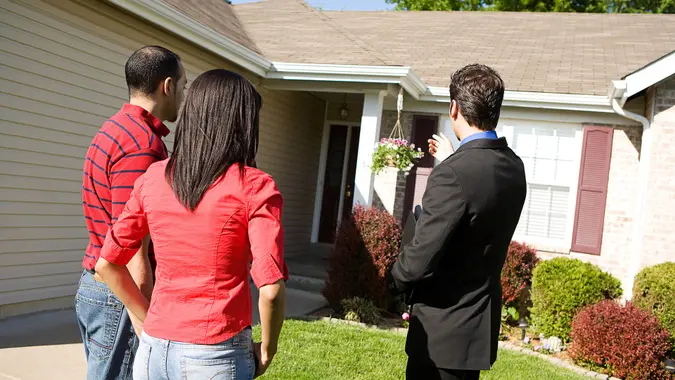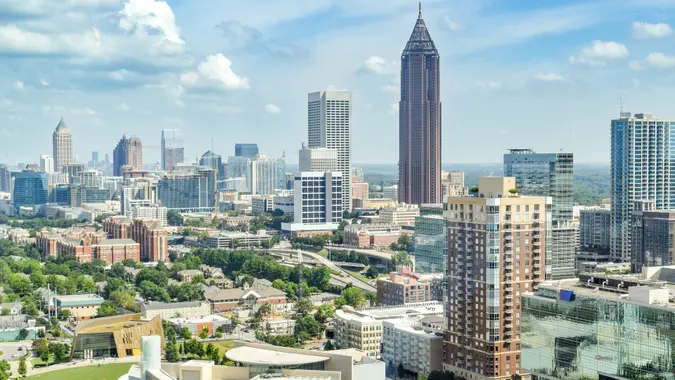Don’t Buy a House in These 3 Cities Facing a ‘Climate Change Real Estate Bubble’

Commitment to Our Readers
GOBankingRates' editorial team is committed to bringing you unbiased reviews and information. We use data-driven methodologies to evaluate financial products and services - our reviews and ratings are not influenced by advertisers. You can read more about our editorial guidelines and our products and services review methodology.

20 Years
Helping You Live Richer

Reviewed
by Experts

Trusted by
Millions of Readers
Besides a prime location, there’s another reason why your zip code is costing you more lately — climate change. With rising sea levels, raging wildfires and other increasing extreme weather events, it’s become much harder to afford a house.
Though affordable housing and climate change are considered separate issues, they’re intertwined. Per a new report from Realtor.com, “in 2024, almost 44.8% of homes in the United States, with a total value nearing $22.0 trillion, confront at least one type of severe or extreme climate risk from either flood, wind, wildfire, heat or air quality.” Due to these high-risk hazards, homeowners are hit with higher insurance premiums and skyrocketing property taxes, less demand for waterfront properties and the total cost of owning a home will rise, U.S. News & World Report reported.
As a result, some people are relocating. “Roughly 8% of U.S. residents likely to move within the next year are doing so because they’re concerned about the impact of climate change on their previous area, compared with 22% moving for a lower cost of living,” a Redfin study found.
Understanding how climate change affects real estate is crucial for safety and the costly impact on housing costs. Here are cities in which to avoid buying a home facing climate change.
1. Los Angeles
California is no stranger to wildfires, and they have been so rampant in the state that several insurance companies are no longer offering coverage or significantly increasing rates.
“In 2024, approximately 5.5% of homes (worth $3.0 trillion) in the United States face severe or extreme risk of fire damage, and nearly 39.1% of these high-risk homes (worth $1.7 trillion) are in California,” Realtor.com reported. “Los Angeles, California sees the highest total value of homes at severe or extreme risk of fire.”
2. Miami
The coastal city is known for its great beaches, lively nightlife scene and stunning homes, but buying real estate in Miami can be risky. According to Realtor.com, the city has the highest total value of homes at severe or extreme heat, wind and flood risk.
Additional living costs in Miami include HVAC and energy-efficiency system improvements and extra insurance due to hurricane risks. “The Insurance Information Institute found that Floridians pay an average of over $4,000 per year for their home insurance — about three times the national average,” per Kin Insurance.
3. New Orleans
While New Orleans is a beautiful city full of interesting culture, good times and amazing food, it can be a risky place to buy property. The Big Easy is prone to flooding because it was built just above sea level and is sinking. There’s not a lot of supportive infrastructure, and hurricane season can cause more flooding issues for the city.
“Miami, Florida has the highest total value of homes at severe or extreme risk of floods, whereas New Orleans, Louisiana leads the rankings in terms of the share of property value at risk,” according to Realtor.com.
 Written by
Written by  Edited by
Edited by 

























